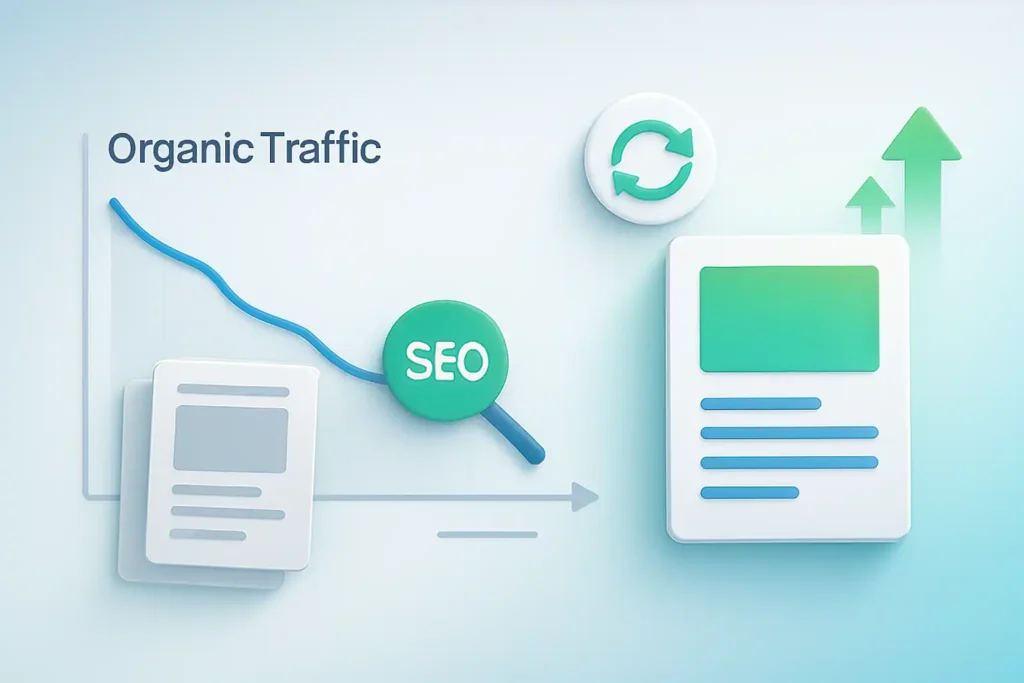What Is Content Decay? How to Identify and Fix Declining Content
In the fast-paced world of digital marketing and SEO, even the best-performing content can lose its power over time. This phenomenon is called content decay. If your traffic is dropping, rankings are slipping, or conversions are falling, your website may be experiencing content decay.
At Small SEO Tool, we provide actionable solutions to identify, analyze, and refresh decaying content so you can restore rankings and regain lost traffic.
What Is Content Decay in SEO?
Content decay refers to the gradual decline in a page’s organic traffic, keyword rankings, and visibility over time. It doesn’t mean your content was bad—it simply becomes outdated, less competitive, or overshadowed by fresher, more relevant content.
Common Causes of Content Decay:
- Outdated statistics or examples
- New competitors publishing fresher content
- Changes in Google algorithms
- Broken links or missing images
- Declining keyword search volume
👉 Use our free SEO Analyzer to detect early signs of content decay.

How to Identify Declining Content
Spotting content decay early is essential to prevent long-term traffic loss.
1. Track Organic Traffic Trends
- Use Google Analytics or Search Console to identify pages losing traffic.
2. Monitor Keyword Rankings
- Declining rankings on primary keywords are a major sign of decay.
3. Check Bounce Rate and Engagement
- High bounce rates may indicate outdated or irrelevant information.
4. Compare With Competitors
- Search your target keywords and compare your content with top-ranking competitors.
👉 Try our Keyword Rank Checker to monitor keyword performance over time.
How to Fix Declining Content
1. Update and Refresh Content
- Replace outdated data with recent stats.
- Add new examples, case studies, and insights.
2. Optimize for User Intent
- Adjust content to match what users are searching for today.
3. Improve On-Page SEO
- Update title tags, meta descriptions, and headers with trending keywords.
4. Add Internal Links
- Connect decaying pages with fresh, high-ranking content.
5. Republish and Promote
- Update the publish date and share refreshed content on social media and newsletters.
👉 Use our On-Page SEO Checker to optimize refreshed content.
what is content decay, seo content decay, fix declining website content, how to update old blog posts, identify content decay seo, content decay causes and solutions, declining organic traffic fix, content refresh strategy
Best Practices to Prevent Content Decay
- Perform regular content audits (every 6–12 months).
- Track SERP changes to adapt quickly to competitor strategies.
- Update evergreen content with fresh insights regularly.
- Strengthen backlinks to refresh authority signals.
- Use structured data (schema) for better visibility in rich snippets.
FAQs About Content Decay
Q1: How often should I update my content to prevent decay?
Every 6–12 months, depending on the niche. Fast-changing industries may require quarterly updates.
Q2: Can content decay affect high-ranking pages?
Yes. Even top-performing content can lose rankings if not updated.
Q3: Should I delete decayed content?
Not always. In most cases, updating and refreshing is better than deleting. Only remove content if it’s irrelevant or beyond repair.
Q4: Does content decay happen to evergreen content?
Yes, but less often. Even evergreen content benefits from fresh data, visuals, and optimization.
Q5: What tools can help me fight content decay?
Google Search Console, Ahrefs, SEMrush, and free tools like the SEO Analyzer.
Conclusion:
Content decay is inevitable, but it doesn’t have to ruin your traffic. By identifying declining pages early and applying a solid content refresh strategy, you can restore rankings, boost SEO performance, and keep your website competitive.
👉 Start your journey today with free SEO tools from Small SEO Tool.


